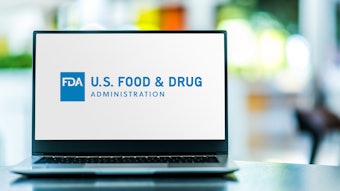REACH legislation distinguishes between scientific research and development (SR&D) and product and process oriented research and development (PPORD). In Article 3/23, SR&D is defined as, "research carried out under controlled conditions in quantities of less than 1 tonne per year."
Under REACH, substances manufactured or imported in volumes less than 1 tonne per year do not need to be registered. Therefore, substances undergoing SR&D are exempt from registration. Additionally, according to Article 56(3) and Article 67(1), the provisions for authorization and restriction of substances do not apply. However, a notification to the European Chemicals Agency (ECHA) has to be made for substances meeting the criteria for classification as dangerous, per Article 113. This obligation goes into effect on Nov. 30, 2010. For substances placed on the market after that date, it applies as soon as the substance is launched, per Article 116.
In Article 3/22, PPORD is defined as "any scientific development related to product development or the further development of a substance, on its own, in preparations or in articles in the course of which pilot plant or production trials are used to develop the production process and/or to test the fields of application of the substance." As such, any development of a substance through scaling-up or process improvement research in a pilot plant or in a full-scale production, as well as application research, falls under the definition of PPORD.
REACH does not impose a limit on the quantity in PPORD, neither to manufacture or import of the substance as such or in a preparation, nor to the incorporation or import in articles. Obligations for substances in PPORD in quantities below 1 tonne per year are the same as those for SR&D, except that authorization and restriction requirements may apply to PPORD.
Substances in volumes of more than 1 tonne/year undergoing PPORD can be exempt from registration for a period of five years, according to Article 9. In order to benefit from this provision, a company needs to submit a PPORD notification to ECHA. Upon request, the exemption can be extended for another five years. If substances have not launched to the market or if a company is developing medicinal products for human or veterinary use, an extension of up to 10 years can be granted. If a substance is also manufactured or imported for other purposes than PPORD, the quantity outside PPORD has to be registered as any other substance when exceeding the 1 tonne threshold.
Substances in PPORD have to be to be carefully checked if they are included in Annex XVII, the list of substances subject to restriction, or Annex XIV, the list of substances subject to authorization. If not yet included in these lists, the substance should be investigated for properties of very high concern. If these properties of very high concern exist, the substance may be subject to a future authorization.
The manufacturer or importer of substances in PPORD must provide a safety data sheet (SDS) to downstream users for substances meeting the criteria for classification as dangerous, for PBT or vPvB substances and for substances included in the candidate list of substances which may be subject to authorization. If the SDS is not required, the supplier must still provide all available and relevant information about the substance that is necessary to enable the users to perform the appropriate risk management measures.
Similar to registration dossiers, a PPORD notification dossier has to be provided through REACH-IT. ECHA will perform a completeness check of the notification within two weeks of the submission. The completeness check verifies whether all the required information elements have been submitted and the payment of the applicable fee has been received.
Key summary:
• REACH distinguishes between SR&D and PPORD.
• SR&D applies to research under controlled conditions in quantities below 1 tonne/year.
• Substances undergoing SR&D are exempt from registration, authorization and restriction.
• A notification needs to be made to ECHA for substances in SR&D meeting the criteria for classification as dangerous.
• The definition PPORD applies to any development of a substance through scaling-up or process improvement research in a pilot plant or in a full-scale production, as well as to application research.
• REACH does not impose a limit on the quantity in PPORD.
• PPORD in quantities below 1 tonne per year requires the same provisions as for SR&D, except that authorization and restriction requirements may apply.
• Substances undergoing PPORD in volumes of more than 1 tonne/year can be exempt from registration for a period of five years.
• A company needs to submit a PPORD notification in order to be granted an exemption.
• Upon request, ECHA can further extend the exemption time line.
Further questions? Ask them at C&T magazine online's REACH Round Table.
Further Information
ECHA Substance Identity Workshop, Dec. 1, 2009, https://echa.europa.eu/doc/press/na_09_22_substance_identity_%20workshop_20091016.pdf
ECHA's Third Stakeholders' Day, Dec. 7, 2009, https://echa.europa.eu/news/events/3rd_stakeholders_day_en.asp
*Readers are reminded that this free service provides basic answers to questions about REACH, but in-depth, consultative services are provided by CONUSBAT for a fee. CONUSBAT reserves the right to determine what information can be provided at no cost, and to refer readers to its services when detailed information is requested.







!['I think the biggest game-changer about [MoCRA's] ... requirement for GMPs is how it changes what it means to be adulterated,' Brandi Reinbold, senior manager of global certification for NSF International, said in this sponsored videocast. Register now to watch and learn more. It's free.](https://img.cosmeticsandtoiletries.com/files/base/allured/all/image/2023/11/NSF_Intl_Thumbnail.6554efdc29816.png?auto=format%2Ccompress&fit=crop&h=191&q=70&rect=275%2C70%2C1328%2C748&w=340)


